Maths
Maths
‘Mathematics is a creative and highly interconnected discipline that has been developed over centuries, providing the solution to some of history’s most intriguing problems. It is essential to everyday life, critical to science, technology and engineering, and necessary for financial literacy and most forms of employment. A high-quality mathematics education therefore provides a foundation for understanding the world, the ability to reason mathematically, an appreciation of the beauty and power of mathematics, and a sense of enjoyment and curiosity about the subject’. Mary Myatt
Here in the Math’s department at St Aidan’s we truly believe that every pupil can succeed. Our pupils experience the opportunity to master an aspirational, deep and broad maths curriculum, that allows them to take their foundational knowledge and apply it through problem solving and reasoning. We understand how crucial maths is for most forms of employment and so we strive to ensure that our maths curriculum provides a high-quality mathematical education that will allow our pupils to flourish. We aim to develop an intrinsic desire to succeed, by aiding our pupils to see the true beauty of Maths and how it can be applied. The Maths curriculum builds on prior connections learnt in Primary school to develop mathematical ideas, fluency, reasoning and competence in solving increasingly sophisticated problems. The curriculum provides a strong foundation, for functional skills, further academic or vocational study and for employment, to give students the appropriate mathematical skills, knowledge and understanding to help them progress to a full range of courses in further and higher education. This includes A level maths courses as well as A level and undergraduate courses in other disciplines such as Science, Geography, Psychology and other subjects, where the understanding and application of Mathematics is crucial.
Curriculum intention:
‘Mathematics as an expression of the human mind reflects the active will, the contemplative reason, and the desire for aesthetic perfection. Its basic elements are logic and intuition, analysis and construction, generality and individuality.’ Richard Courant, German-American mathematician
- Empower pupils with the Mathematical knowledge to give pupils the choice of moving forward into selective vocations such as Medicine, Finance, Engineering and Technology.
- Provide a continuous and seamless transition between key phases of education, taking them on a journey of mathematical education that is rich in logic, problem solving, analysis and reasoning.
- Through the use of scaffolding within lessons, small steps and no restrictions we ensure that all learners, including the most disadvantaged pupils and pupils with SEND, are provided with the same knowledge, skills and cultural capital they require for future learning and employment.
- Our maths curriculum is enriched to include experiences outside the classroom, such as participating in the maths challenge and the maths inspiration days.
- Ensure that the fundamental basics of numeracy are well established from an early age, pupils participate in a Countdown activity each morning, each week they are exposed to Drop Everything and Reason (DEAR) where they can further develop their problem-solving skills. Year 7 homework focuses on basic numeracy through the use of Times table Rockstar’s to give our pupils the solid foundations they require to be successful in mathematics.
- Ensure all pupils can articulate their mathematical understanding, through literacy within math’s, a key part of our curriculum, Etymology to study the key words and Scholarly Reading to extend and deepen the interconnection of maths to other subjects and the world outside education.
- Within Mathematics we teach for mastery, ensuring that pupils have the knowledge and skills required before moving onto the next stage of their mathematical education.
- Consolidate and extend their numerical and mathematical capability from key stage 2 by developing their understanding of the number system and place value to include decimals, fractions, powers and roots.
- Enable students to select and use appropriate calculation strategies to solve increasingly complex problems.
- Use algebra to generalise the structure of arithmetic, including to formulate mathematical relationships.
- Substitute values into expressions and formulae, rearrange and simplify expressions, and solve increasingly more complex equations.
- Move freely between different numerical, algebraic, graphical and diagrammatic representations.
- Develop algebraic and graphical fluency.
- Use language and properties precisely to analyse numbers, algebraic expressions, 2-D and 3-D shapes, probability and statistics.
- Extend their understanding of the number system; make connections between number relationships, and their algebraic and graphical representations
- Extend and formalise their knowledge of ratio and proportion in working with measures and geometry, and in formulating proportional relations algebraically.
- Identify variables and express relations between variables algebraically and graphically.
- Make and test conjectures about patterns and relationships; look for proofs or counterexamples.
- Reason deductively in geometry, number and algebra, including using geometrical constructions.
- Interpret when the structure of a numerical problem requires additive, multiplicative or proportional reasoning.
- Explore what can and cannot be inferred in statistical and probabilistic settings, and express their arguments formally.
- Develop their mathematical knowledge, in part through solving problems and evaluating the outcomes, including multi-step problems.
- Develop their use of formal mathematical knowledge to interpret and solve problems, including in financial mathematics.
- Model situations mathematically and express the results using a range of formal mathematical representations.
- Select appropriate concepts, methods and techniques to apply to unfamiliar and non-routine problems.
- Pupils will become fluent with this knowledge and these skills through varied and frequent practice with increasingly complex problems over time, this allows pupils to develop conceptual understanding and the ability to recall and apply knowledge rapidly and accurately.
Curriculum Design
St. Aidan’s Maths Curriculum Journey and Narrative
St.Aidan’s Maths Progression Map
Course information
For more information about our sixth form course provision please follow the link below:
Courses « St. Anthony’s & St. Aidan’s Catholic Sixth Form (aaasixthform.com)
Implementation:
‘The essence of mathematics is not to make simple things complicated, but to make complicated things simple’. Stan Gudder
See 7 Year Plan
- The curriculum is aspirational covering the national curriculum in England: Mathematics Program of study and beyond.
- Each curriculum component is revisited and built upon in subsequent years and the links between skills and topics are highlighted to the learners as they progress through the years, this allows students to fully understand the learning journey they are on, they can appreciate why a particular topic or skill is taught at a particular time and where this can be used in future learning.
- Retrieval practice is embedded into our curriculum, this is done firstly through the use of SMART activities at the beginning of each lesson, recalling key foundational knowledge required throughout the lesson.
- Regular accurate assessments are used to inform teachers with regard to pupil knowledge, understanding skills and attitude. Knowledge gaps after every assessment are addressed and closed.
- Teaching groups, whilst organised by ability, are not restricted, scaffolding and support is deployed within class, students who are not sufficiently fluent can consolidate their understanding further through additional practice before moving on.
- Modelling of problems is used to help them reach the same point as students who grasp concepts rapidly, so that they may all move forward to increasingly more difficult problems that embed and develop their understanding.
- Specialist provision from numeracy is done so at a point of need, carefully considered intervention programs are utilised that measure the progress and ensure pupils quickly develop their confidence to allow them to access the demands and rigours of GCSE.
- Regular opportunities to participate with numeracy are built into the school week, pupils participate in a Countdown activity each morning, each week they complete Drop Everything and Reason (DEAR) to enhance problem solving skills. All of these develop the learner’s confidence and enjoyment of number.
There are 5 main overarching concepts within our 5 year curriculum, these cover Number, Algebra, Geometry and Measure, Ratio and Proportion, and Statistics. Within each of students will initially consolidate and extend their understanding of topics learnt at Primary before new content and skills are introduced.
The five areas will be assessed through:
AO1 – Use and apply standard techniques.
- Be able to accurately recall facts, terminology and definitions.
- Use and interpret notation correctly.
- Accurately carry out routine procedures.
- Set tasks requiring multi-step solutions.
AO2 – Reason, interpret and communicate mathematically.
- Make deductions, inferences and draw conclusions from mathematical information
- Construct chains of reasoning to achieve a given result
- Interpret and communicate information accurately
- Present arguments and proofs
- Assess the validity of an argument and critically evaluate a given way of presenting information
AO3 Solve problems within mathematics.
- Translate problems in mathematical or non-mathematical contexts into a process or a series of mathematical processes
- Make and use connections between different parts of mathematics
- Interpret results in the context of the given problem
- Evaluate methods used and results obtained
- Evaluate solutions to identify how they may have been affected by assumptions made.
St. Aidan’s Numeracy Strategy:
Impact:
“In math, you’re either right, or you’re wrong.” Katherine Johnson
St Aidan’s Catholic Academy Math’s department measure impact as per the AAR document, students who experience our curriculum will develop skills in:
- Recalling facts, terminology and definitions.
- Accurately carrying out routine procedures or set tasks requiring multi-step solutions.
- Making deductions, inferences and draw conclusions from mathematical information.
- Construct chains of reasoning to achieve a given result.
- Interpreting and communicating information accurately.
- Presenting arguments and proofs.
- Assessing the validity of an argument and critically evaluating a given way of presenting information.
- Translating problems in mathematical or nonmathematical contexts into a process or a series of mathematical processes.
- Interpreting results in the context of the given problem.
- Evaluating methods used and results obtained.
- Evaluating solutions to identify how they may have been affected by assumptions made.
- Pupils are empowered with the Mathematical knowledge to give pupils the choice of moving forward into selective vocations and succeed.
Parental Support
BCCET Common mathematical methods



